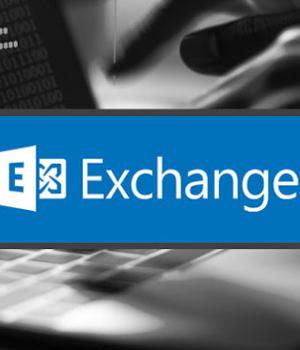Security News > 2021 > August > Hackers Actively Searching for Unpatched Microsoft Exchange Servers

Threat actors are actively carrying out opportunistic scanning and exploitation of Exchange servers using a new exploit chain leveraging a trio of flaws affecting on-premises installations, making them the latest set of bugs after ProxyLogon vulnerabilities were exploited en masse at the start of the year.
The remote code execution flaws have been collectively dubbed "ProxyShell." At least 30,000 machines are affected by the vulnerabilities, according to a Shodan scan performed by Jan Kopriva of SANS Internet Storm Center.
"Started to see in the wild exploit attempts against our honeypot infrastructure for the Exchange ProxyShell vulnerabilities," NCC Group's Richard Warren tweeted, noting that one of the intrusions resulted in the deployment of a "C# aspx webshell in the /aspnet client/ directory."
Patched in early March 2021, ProxyLogon is the moniker for CVE-2021-26855, a server-side request forgery vulnerability in Exchange Server that permits an attacker to take control of a vulnerable server as an administrator, and which can be chained with another post-authentication arbitrary-file-write vulnerability, CVE-2021-27065, to achieve code execution.
The vulnerabilities came to light after Microsoft spilled the beans on a Beijing-sponsored hacking operation that leveraged the weaknesses to strike entities in the U.S. for purposes of exfiltrating information in what the company described as limited and targeted attacks.
Three other issues - known as ProxyShell - could be abused to bypass ACL controls, elevate privileges on Exchange PowerShell backend, effectively authenticating the attacker and allowing for remote code execution.
News URL
http://feedproxy.google.com/~r/TheHackersNews/~3/o6H5XVqU5W0/hackers-actively-searching-for.html
Related news
- Microsoft: North Korean hackers join Qilin ransomware gang (source)
- Microsoft Exchange Online outage affects Outlook web users (source)
- Microsoft: Exchange Online bug mistakenly quarantines user emails (source)
- Hijacked Microsoft web domain injects spam into SharePoint servers (source)
- Microsoft Credits EncryptHub, Hacker Behind 618+ Breaches, for Disclosing Windows Flaws (source)
- Microsoft fixes auth issues on Windows Server, Windows 11 24H2 (source)
- Microsoft investigates global Exchange Admin Center outage (source)
- Microsoft: Windows Server 2025 restarts break connectivity on some DCs (source)
- Microsoft: Exchange 2016 and 2019 reach end of support in six months (source)
- Microsoft fixes Windows Server 2025 blue screen, install issues (source)
Related Vulnerability
| DATE | CVE | VULNERABILITY TITLE | RISK |
|---|---|---|---|
| 2021-03-03 | CVE-2021-26855 | Server-Side Request Forgery (SSRF) vulnerability in Microsoft Exchange Server 2013/2016/2019 Microsoft Exchange Server Remote Code Execution Vulnerability | 0.0 |
| 2021-03-03 | CVE-2021-27065 | Path Traversal vulnerability in Microsoft Exchange Server 2013/2016/2019 Microsoft Exchange Server Remote Code Execution Vulnerability | 0.0 |